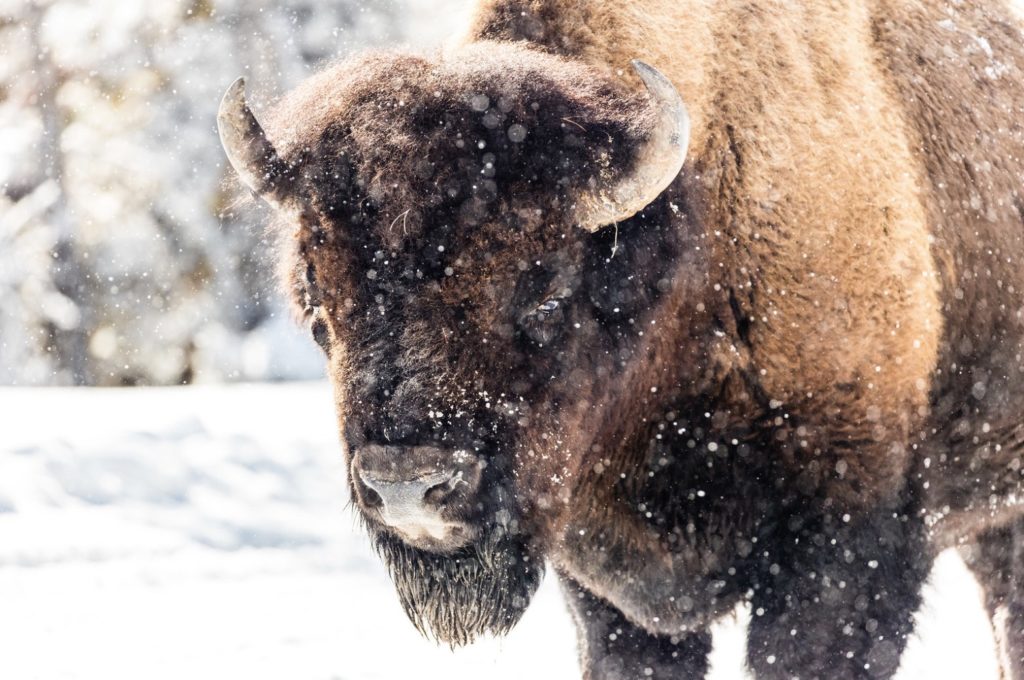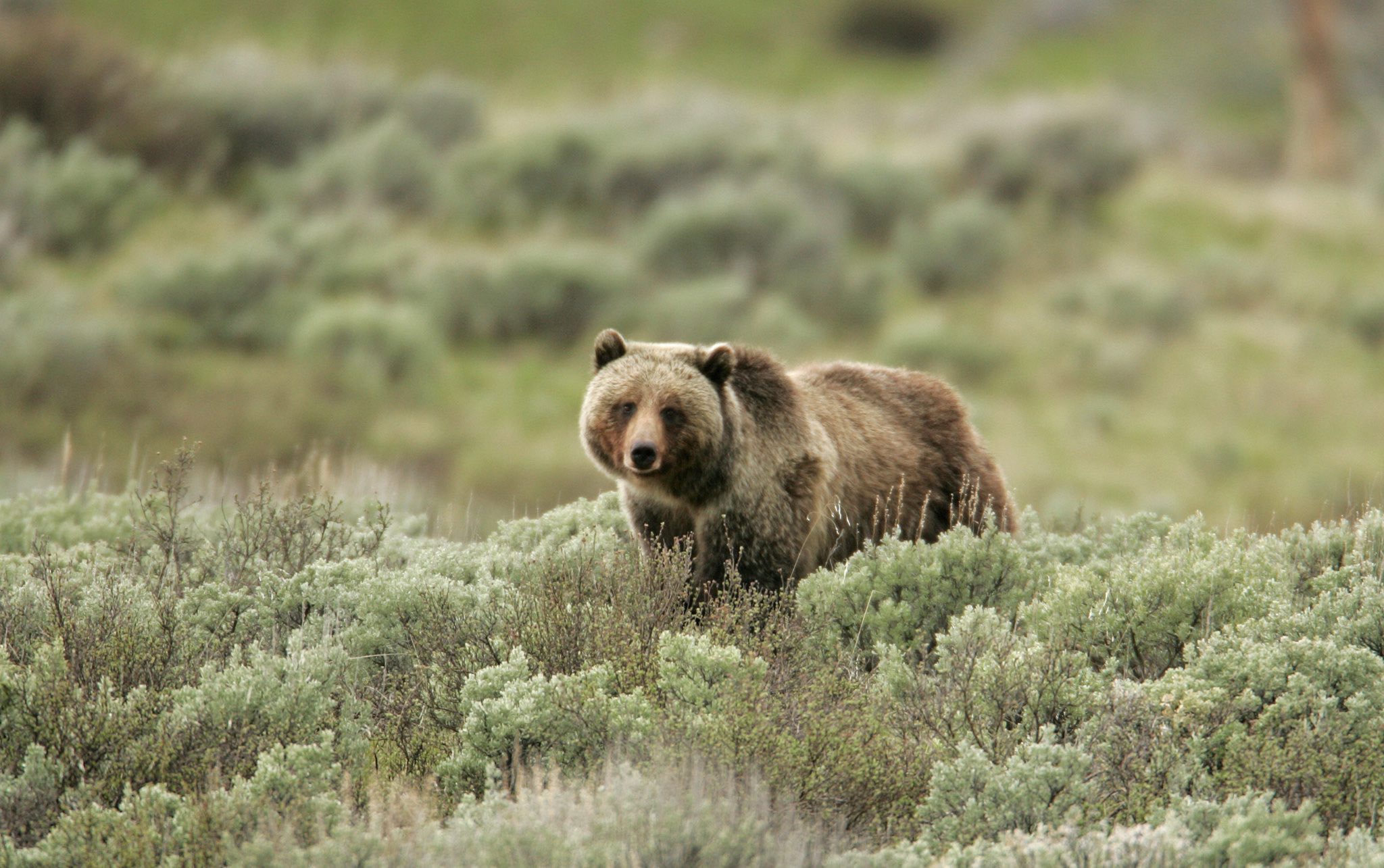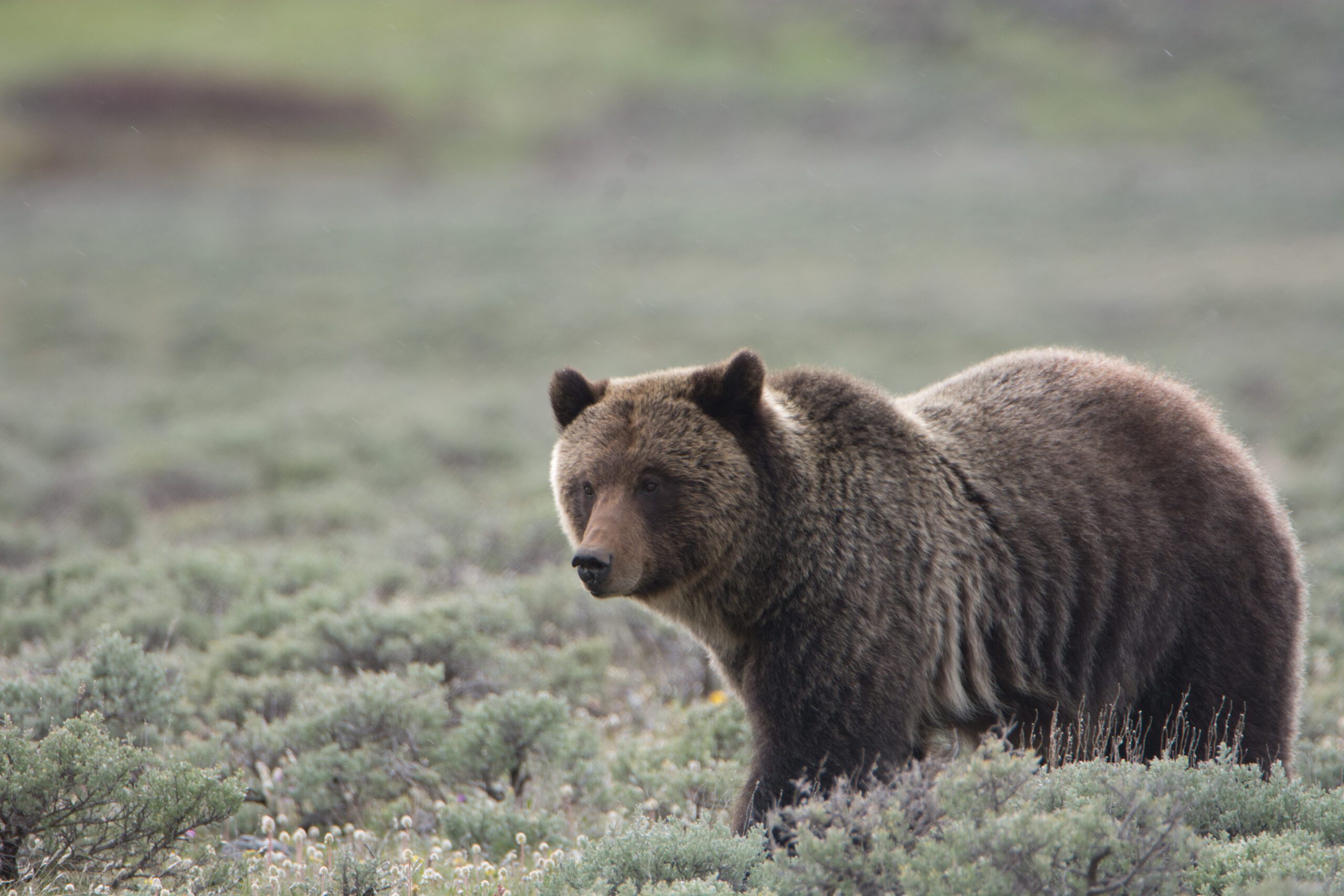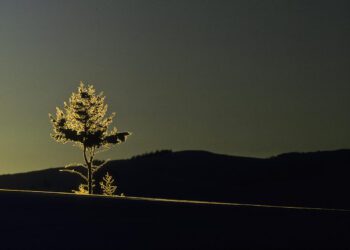Quarantined among the bison
By Bella Butler COMMUNITY AND ENVIRONMENT EDITOR
LAMAR VALLEY—The evening in Lamar Valley is quiet. While the wide-open spaces of Yellowstone National Park’s northeastern corner are usually calm, there is an obvious absence. The typical whirring traffic of eager tourists is inaudible; the roads are empty.
A symphony of songbirds fills the void, and wildlife trots across the untouched asphalt. Joe Loviska is sitting in his hammock, observing the scene. Three bison are in the valley below, and a bald eagle swoops overhead. Loviska lives at the Lamar Buffalo Ranch with his partner, Katie Roloson. They are some of the few people that remain living amongst the wild things in the park since it’s temporary closure on March 20.
Loviska notes the stillness; no snowmobiles, traffic jams or wolf watchers gawking through telescopes. “Winter is a scene here in the Northern Range, and that totally just stopped.”
Roloson is the director of fleet and field campus operations for Yellowstone Forever, the official non-profit partner of Yellowstone National Park. She and Loviska moved to the ranch in the fall of 2017 after completing graduate school in Bellingham, Washington.
The Lamar Buffalo Ranch is one of the many relics of rich history in the park. In 1901, rampant poaching left just 25 bison in Yellowstone. In an attempt to preserve the species, Congress appropriated $15,000 dollars to the effort, which purchased 21 bison from private owners and brought them to the buffalo ranch for breeding and rehabilitation. Today, the ranch is used as a basecamp for Expedition Yellowstone and Yellowstone Forever educational programming.

Despite having been a resident at the ranch for over two years, the remoteness still has a way of gnawing at Loviska every now and then. Beginning in January, he started teaching a leadership studies seminar at Montana State University. A few days a week, he got his town fix in Bozeman, before returning to the ranch for long weekends. Then MSU went virtual, and Loviska was bound to the Lamar indefinitely.
“I wasn’t ready for this to be the rest of my life,” he said of the isolated ranch living. “It was hard for about a week. . .and then slowly it became easier.”
Roloson and Loviska are joined in their solitude by three Yellowstone Forever volunteers who live on the property. Loviska said being that their only human interactions are with one another, they’ve begun to operate as a family unit. “We basically move like an organism,” he said. The five of them share meals, watch movies in the campus classroom and play games like Bang, a Western-themed card game complete with the classic sheriff-outlaw dynamic.
Loviska said that while the outdoor space is vast, the interior of his and Roloson’s cabin, which is the size of a small apartment, still feels tight, and they, like others, are plagued with quarantine boredom some days.
By Loviska’s measure, it’s still winter in the valley because he can still step out the front door and ski. A tele skier, he says he goes for distance—which there is no shortage of in Lamar Valley—but he still enjoys ridge climbs and tagging summits. Last week, he ascended Druid Peak, the iconic onlooker of Yellowstone’s Northern Range.
In the EBS Town Hall meeting on April 20, Yellowstone National Park Superintendent Cam Sholly made remarks on an interesting park dynamic. The roads in Yellowstone only occupy a small fraction of the land, something like 1 percent, Sholly said. Yet the vast majority of visitors concentrate on the roads and in the pullouts, leaving most of the park somewhat untouched. Loviska adds that in the northern range, that small piece of road just happens to cut through prime habitat, part of why the Lamar Valley is treasured wildlife viewing land.
“Out here, for me, the biggest difference of this time is that the animals—the other animals I should say—are all just so much less stressed and they can use the whole space in a very relaxed and uninterrupted way, and that’s really cool to watch.” Loviska does not consider himself one apart from the rest in the valley; he calls the wildlife his neighbors.
Roloson said the other day she spotted a bison laying across the pavement. Assuming it had been hit by a car, she glanced a second time, only to realize it was just napping.

“It’s not like the wolves are doing jumping jacks and the mountain lions are tussling in the valley, but it just feels as though the human world has ended out here,” he said. It sounds haunting, but Loviska imagines the empty streets of shut down cities are more ghostly than even the unsettled valley.
Loviska ponders what human-wildlife interactions will look like when the visitors return. He points to an incident in the late 20th century, when the park stopped their crowd luring practice of bear feeding and a brief period of conflict ensued.
Roloson referenced Yellowstone Forever’s mission of inspiring appreciation for the park, a task more easily achieved when people can spend time inside its boundaries. “It’s a pretty special place to be,” she said. “I really enjoy the experiences [here], and I want other people to experience that, as well.”
Like Loviska, Roloson enjoys existing among the wildlife. Her favorite part of living on the ranch is having bison cruise through campus. Lately, she said big bulls have been trampling through, leaving 3-inch hoofprints on the ground where a human foot barely leaves a mark.
Spring is touching the valley now, Loviska observes, a process him and Roloson haven’t ever witnessed. Usually during this time of year, they move off of the ranch and spend time in Gardiner or traveling while Expedition Yellowstone classes cycle through the campus.
They’ve watched the snow slowly disappear from south-facing hillsides and have seen the spring migrations—from the appearance of the horned larks and robins to large raptors like the eagles.
The near future of the park is uncertain, but surely busier days are around the corner. The songbirds’ tunes will be drowned out by cars, and the bison napping in the roads will find a new bed. For now, the pair is simply enjoying their home, collecting treasured moments living in Lamar Valley.













